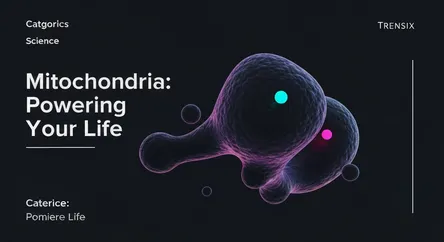Science
Mitochondria: Powering Your Life

Discover mitochondria, the powerhouses of our cells. Learn how they create energy, why they're trending, and their impact on human health.
What is it?
Mitochondria are specialized structures, or organelles, found within the cells of nearly all complex life, including humans. Often called the "powerhouse of the cell," their primary role is to generate most of the cell's supply of adenosine triphosphate (ATP), which is used as a source of chemical energy. This process, known as cellular respiration, converts nutrients like glucose into ATP. Uniquely, mitochondria contain their own small set of DNA, separate from the main DNA in the cell's nucleus, suggesting an ancient origin as independent bacteria.
Why is it trending?
The concept of "mitochondrial health" is gaining significant traction in wellness and medicine. Research increasingly links mitochondrial dysfunction to the aging process and a wide range of chronic diseases, including neurodegenerative disorders, diabetes, and chronic fatigue syndrome. This has spurred interest in biohacking and lifestyle interventions like specific diets, exercise routines, and supplements (such as CoQ10 and PQQ) aimed at optimizing mitochondrial function for better energy, longevity, and overall vitality.
How does it affect people?
The health of your mitochondria directly impacts your daily life. When they function efficiently, you experience higher energy levels, a robust metabolism, and better physical performance. Conversely, when they are damaged or inefficient, it leads to cellular energy shortages. This can manifest as fatigue, cognitive fog, muscle weakness, and an accelerated aging process. Inherited mitochondrial diseases can cause severe, multi-system health problems, underscoring their critical role in sustaining virtually every bodily function.